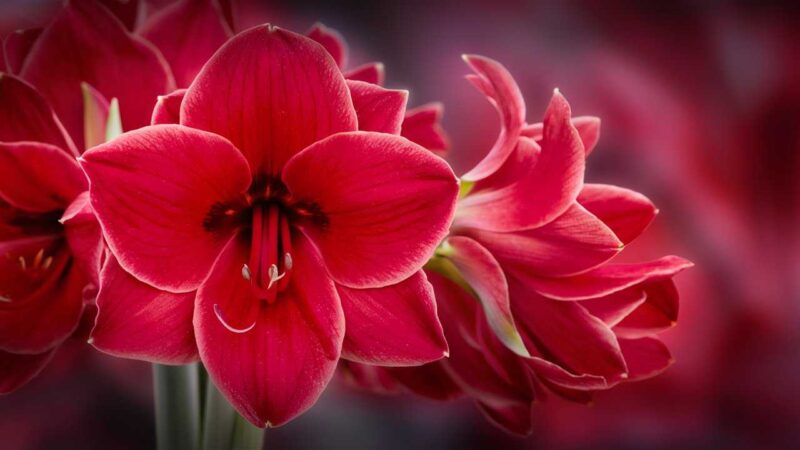When we think about nurturing plants, the first element that often comes to mind is water. Plants generally rely on water uptake through their roots to sustain life and promote growth. However, one striking exception to this norm can be found in the enchanting amaryllis bulb.
These stunning flowering plants are popular during the holiday season due to their large, vibrant blooms, but many people are surprised to learn that amaryllis bulbs can grow and thrive with very little water.
In this article, we will explore the remarkable ways in which amaryllis bulbs grow without relying heavily on water, the biology behind this process, and how you can cultivate these beautiful plants in your own home.
Understanding the Amaryllis Bulb

Amaryllis (Hippeastrum) is a genus of flowering bulbs that are native to the tropical regions of South America. They come in a variety of colors and sizes, making them a favorite for indoor decoration. The amaryllis bulb itself is a modified underground stem, designed to store nutrients and moisture. This adaptation allows the plant to survive in periods of drought and go dormant when conditions aren’t suitable for growth.
When the right environmental conditions are present—such as warmth and light—the amaryllis bulb will sprout, even if it hasn’t been exposed to much water. This ability to store energy and moisture showcases the bulb’s specialized structure and its evolutionary adaptations.
The Biology Behind Amaryllis Growth
1. Storage Tissues
The amaryllis bulb contains specialized tissues capable of storing carbohydrates, nutrients, and moisture. The basal plate of the bulb is where the roots emerge, while the fleshy scales of the bulb store the resources needed for growth. These energy reserves fuel the bulb during its initial growth stages when external water may not be readily available.
2. Dormancy and Activation
Amaryllis bulbs typically go through a dormancy period after blooming. During dormancy, the plant conserves energy and moisture. When the bulb is reintroduced to warmth and light conditions, the stored carbohydrates and nutrients are mobilized, allowing it to begin the growth process with minimal water inputs. This dormancy period is crucial because it prepares the plant to withstand less favorable growing conditions.
3. Water Uptake Mechanism
While it’s true that amaryllis can tolerate periods of low moisture, they do require water at some point in their growth cycle to activate. However, what makes them unique is their ability to absorb water through their roots more efficiently once they begin to sprout. During the initial stages, they utilize their stored resources to support new growth while water uptake is delayed. Once the roots develop and expand, the plant can then start to take in water, supporting larger foliage and blooms.
Growing Amaryllis Bulbs

If you’re keen to grow amaryllis bulbs, here’s a simple guide to help you get started—without the worry over excessive watering.
1. Choosing the Right Bulb
Select plump, firm amaryllis bulbs for planting. The bigger the bulb, the better the bloom, as larger bulbs can store more energy.
2. Planting
Use a well-draining potting mixture. It’s essential that the bulb isn’t buried too deep—only about one-third of the bulb should be covered, with the top exposed.
Use a pot that is slightly larger than the bulb; this will allow room for root expansion.
3. Watering
After planting, water the bulb lightly. The key is not to overwater, as excess moisture can lead to rot.
The initial watering should just moisten the soil, after which you can let it dry out slightly before the next watering.
4. Light and# Temperature
Place the pot in a warm location (around 70°F to 75°F) with indirect sunlight.
After a few weeks, as the plant starts to grow, you can gradually introduce it to brighter light.
5. Fertilizing
Once you see active growth, you can start fertilizing with a diluted liquid fertilizer every two weeks to provide the nutrients required for blooming.
Conclusion
The ability of amaryllis bulbs to grow with minimal water is a fascinating aspect of their biology. Their remarkable adaptations enable them to conserve resources and thrive in conditions that would be challenging for many other plants.
Remember, while they can endure periods without water, a little attention to their needs will reward you with stunning blooms that are well worth the wait!





